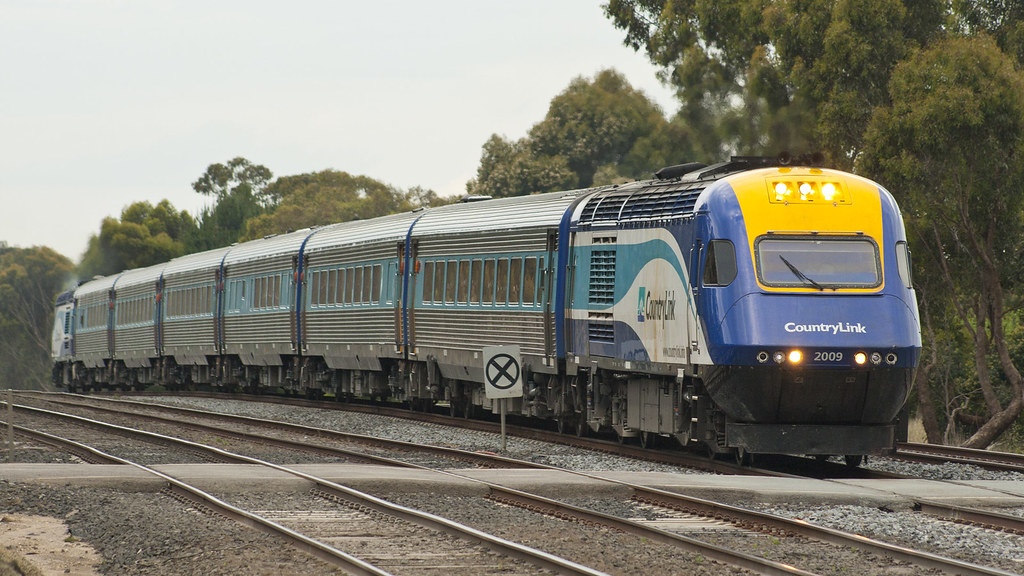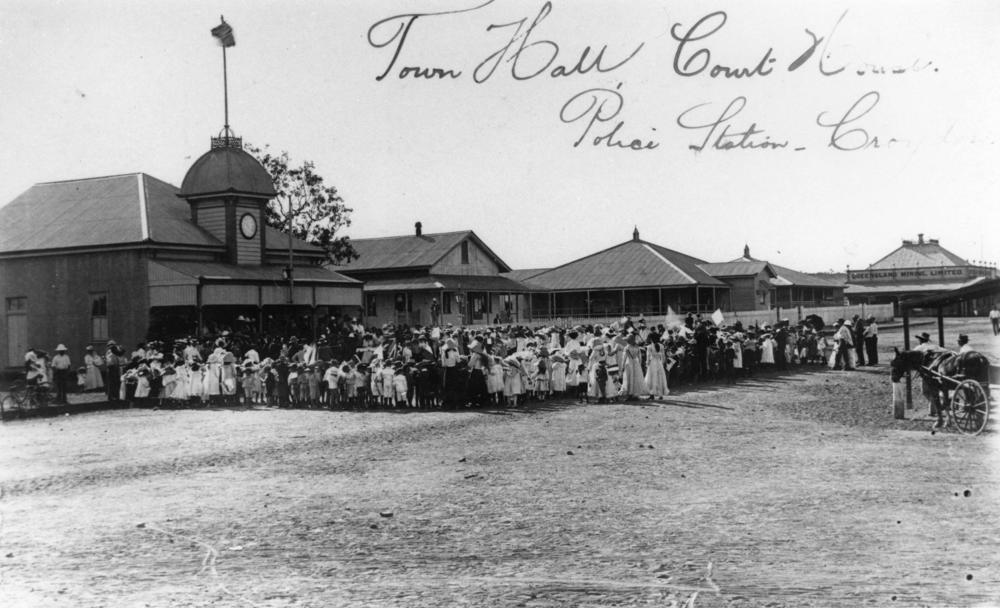|
Queensland Railways 1800 Class Rail Motor
The 1800 class railcars were a class of self-propelled railcars built by Commonwealth Engineering, Granville for the Queensland Railways. History In 1949, the Queensland Railways placed an order for 12 aluminium two-carriage 1800 class railmotors with Commonwealth Engineering, Granville. Each set comprised a power car (RM - "Rail Motor") and trailer car (TP - "Trailer Passenger"). Two trailer carriages remain in service on the '' Gulflander'', operating between Normanton and Croydon, and one motor car is preserved at the Rosewood Railway Museum. Queendsland's Great Trains The bodies of four others are privately owned. Summary References {{QueenslandLocos, state=collapsed[...More Info...] [...Related Items...] OR: [Wikipedia] [Google] [Baidu] |
Gulflander
The ''Gulflander'' is a passenger train operated by Queensland Rail on the isolated Normanton to Croydon line in the Gulf Country of northern Queensland, Australia. History Steam locomotives were used until 1929. By that stage railmotors had been introduced since 1922. By 1974 the line was under the threat of closure, earning just $3,000 in revenue but costing $64,000 to maintain. Today the line exists as a tourist attraction and is said to be more an adventure than a train ride. The crews are qualified guides and will stop the train and talk about points of interest. The present three-car railmotor set of RM93 Gardner diesel railmotor and carriages TP1809 and TP1811 is known as "the old Tin Hare". Service The service runs once per week to Croydon on Wednesdays, returning to Normanton on Thursdays. Shorter charter services on most other days are also available. Rollingstock Thirteen power units have been used on the line. It is unusual that of the 13 units, 12 surviv ... [...More Info...] [...Related Items...] OR: [Wikipedia] [Google] [Baidu] |
Commonwealth Engineering
Commonwealth Engineering (often shortened to Com-Eng, later Comeng [ ]) was an Australian engineering company that designed and built railway locomotives, rolling stock and trams. History Smith and Waddington, the predecessor to Commonwealth Engineering, was founded in 1921, in the Sydney suburb of Camperdown, New South Wales, Camperdown, as a body builder for custom motor cars. It went bankrupt in the Great Depression in Australia, Depression, and was reformed as Waddingtons Body Works and the main factory was moved to Granville, New South Wales, Granville, after a fire in the main workshop. The Government of Australia took control of the company during World War II as the company was in serious financial difficulties but had many government orders in its books. The government purchased a controlling stake in the company in 1946 and changed the name to Commonwealth Engineering. In 1949 a factory was established in Rocklea, Queensland. This was followed in 1952 a plant in Basse ... [...More Info...] [...Related Items...] OR: [Wikipedia] [Google] [Baidu] |
Granville, New South Wales
Granville is a Suburbs and localities (Australia), suburb in Greater Western Sydney, western Sydney, in the state of New South Wales, Australia. Granville is located west of the Sydney central business district, split between the Local government in Australia, local government areas of Cumberland Council (New South Wales), Cumberland City Council and the City of Parramatta. South Granville, New South Wales, South Granville is a separate suburb. Lisgar, Redfern, Heath and Mona Streets form the approximate border between Granville and South Granville. The Duck River (New South Wales), Duck River provides a boundary with Auburn, New South Wales, Auburn, to the east. History In 1855, the Granville area was known as Parramatta Junction, named after the final stop of the first railway line of New South Wales. The Rail transport in New South Wales#Sydney - Parramatta line, Sydney-Parramatta Line ran from Sydney terminus, just south from today's Central railway station, Sydney, Ce ... [...More Info...] [...Related Items...] OR: [Wikipedia] [Google] [Baidu] |
Queensland Railways
Queensland Rail (QR) is a railway operator in Queensland, Australia. Owned by the Queensland Government, it operates local and long-distance passenger services, as well as owning and maintaining approximately 6,600 kilometres of track and related infrastructure. QR was also responsible for all Queensland freight services, and from 2002 operated interstate services under the Australian Railroad Group, Interail and QR National brands. These were all spun out into a separate entity in July 2010, and later privatised as Aurizon. History Beginnings Queensland Railways was the first operator in the world to adopt narrow gauge (in this case ) for a main line, and this remains the systemwide gauge within Queensland today. The colony of Queensland separated from New South Wales in 1859, and the new government was keen to facilitate development and immigration. Improved transport to the fertile Darling Downs region situated west of Toowoomba was seen as a priority. As adequate river ... [...More Info...] [...Related Items...] OR: [Wikipedia] [Google] [Baidu] |
Normanton, Queensland
Normanton is an outback town and coastal locality in the Shire of Carpentaria, Queensland, Australia. In the the locality of Normanton had a population of 1,257 people, of whom 750 (60%) identified as Aboriginal and/or Torres Strait Islander people, while the town of Normanton had a population of 1,210 people, of whom 743 (62%) identified as Aboriginal and/or Torres Strait Islander people. It is the administrative centre of the Shire of Carpentaria. It has a tropical savanna climate and the main economy of the locality is cattle grazing. The town is one terminus of the isolated Normanton to Croydon railway line, which was built during gold rush days in the 1890s. The Gulflander passenger train operates once a week. The "Big Barramundi" and a statue of a large saltwater crocodile are notable attractions of the town, along with many heritage-listed sites. History The town sits in the traditional lands of the Gkuthaarn (Kareldi) and Kukatj people. The town takes its name from ... [...More Info...] [...Related Items...] OR: [Wikipedia] [Google] [Baidu] |
Croydon, Queensland
Croydon is a town and Suburbs and localities (Australia), locality within the Shire of Croydon in Queensland, Australia. It is a terminus for the Normanton to Croydon railway line, which operates the Gulflander tourist train. At the , Croydon had a population of 258 people. History The historic goldrush town of Croydon is located in the heart of the Gulf Savannah, west of Cairns. Mining in the area quickly drove out the Tagalag people, Tagalaka people indigenous to the area. Croydon was a large pastoral holding owned by Alexander Brown and Margaret Chalmers that covered an area of approximately , when first settled in the 1880s. The town's name is derived from a pastoral run name, that was used by their sons, Alexander Brown and William Chalmers Brown, pastoralists; William Chalmers Brown was born in Croydon, England in 1841 and is buried at Toowong Cemetery, Toowong cemetery in Brisbane. Gold was discovered in 1885 and by 1887, the town's population had reached 7,000. Croydon P ... [...More Info...] [...Related Items...] OR: [Wikipedia] [Google] [Baidu] |
Rosewood Railway Museum
The Rosewood Railway Museum is located near Rosewood, Queensland, Australia Australia, officially the Commonwealth of Australia, is a Sovereign state, sovereign country comprising the mainland of the Australia (continent), Australian continent, the island of Tasmania, and numerous List of islands of Australia, sma ... on the former railway to Marburg first opened in 1909. The museum utilises a station and yard located at Kunkala as its base. Operations History The Marburg branch opened from Rosewood in 1912 and saw primarily coal traffic for most of its life. As traffic declined the line was slowly closed in sections. Marburg to Birru was the first to close in 1964, followed by Kunkala in 1970, Cabanda in 1973 and to Perry's Knob in 1979. During the 1974 floods, the bridge carrying Rosewood-Marburg road collapsed onto the line, splitting Perry's Knob from Rosewood and cutting the line in half. In 1984, the ARHS Queensland Division began work on returning ... [...More Info...] [...Related Items...] OR: [Wikipedia] [Google] [Baidu] |
Dalby, Queensland
Dalby () is a rural town and locality in the Western Downs Region, Queensland, Australia. In the , the locality of Dalby had a population of 12,719 people. It is on the Darling Downs and is the administrative centre for the Western Downs Region. Geography Dalby is approximately 82.3 kilometres (51 mi) west of Toowoomba, west northwest of the state capital, Brisbane, 269 kilometres (167 mi) east southeast of Roma and 535 kilometres (332 mi) east southeast of Charleville at the junction of the Warrego, Moonie and Bunya Highways. State Route 82 also passes through Dalby. It enters from the north as Dalby–Jandowae Road and exits to the south as Dalby–Cecil Plains Road. Dalby-Cooyar Road exits to the east. Dalby is the centre of Australia's richest grain and cotton growing area. Western railway line The Western railway line passes through Dalby with a number of railway stations serving the locality: * Baining railway station () * Yarrala railway stat ... [...More Info...] [...Related Items...] OR: [Wikipedia] [Google] [Baidu] |
Gympie
Gympie ( ) is a city and a Suburbs and localities (Australia), locality in the Gympie Region, Queensland, Australia. In the Wide Bay-Burnett District, Gympie is about north of the state capital, Brisbane. The city lies on the Mary River (Queensland), Mary River, which floods Gympie occasionally. The locality of Gympie is the central business district for the city of Gympie and also the administrative centre for the Gympie Region local government area. As of June 2021, Gympie had a population of 53,851. Gympie is famous for its gold field. It contains a number of historic buildings registered on the Queensland Heritage Register. History ''Gabi-Gabi language, Gubbi Gubbi (Kabi Kabi, Cabbee, Carbi, Gabi Gabi)'' is an Australian Aboriginal language formerly spoken by the indigenous peoples of the Sunshine Coast Region and Gympie Region, particularly the towns of Caloundra, Noosa Heads, Queensland, Noosa Heads, Gympie and extending north towards Maryborough, Queensland, Marybor ... [...More Info...] [...Related Items...] OR: [Wikipedia] [Google] [Baidu] |
Ebenezer, Queensland
Ebenezer is a rural locality in the City of Ipswich, Queensland, Australia. In the , Ebenezer had a population of 315 people. Geography The locality is bounded to the north-west by the Bremer River and to north-east by the Yarrowlea-Jeebropilly railway line (a branch line off the Main Line railway). Despite the name, Ebenezer railway station is off Coopers Road in neighbouring Jeebropilly (), just before the balloon loop at the end of the line. In the west of the locality is a former coal mine. The rehabilitation of the site has been controversial. Geiger Lagoon () is a lake created from the site of the Jeebropilly West open-cut mine, which closed in 2001. The lagoon is named after the Geiger family, who were pioneer settlers from 1857 in the area. Keanes Lagoon is a waterhole (). It is named after the land owner John Richard Keane (1846-1927). Apart from this the land use is a mix of rural residential living (mostly around Ebenezer Road and Mount Forbes Road) and ... [...More Info...] [...Related Items...] OR: [Wikipedia] [Google] [Baidu] |






